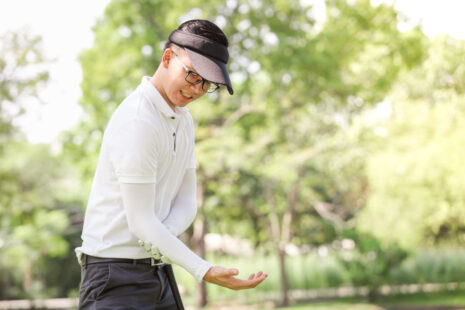Yes, it’s possible to pull a muscle while participating in gymnastics. Gymnastics involves a wide range of dynamic movements, jumps, flips, and rotations, which can place significant stress on the muscles and soft tissues of the body. A muscle strain, commonly referred to as a pulled muscle, occurs when a muscle is stretched or torn beyond its normal capacity, often due to sudden or excessive force.
Several factors can contribute to pulling a muscle in gymnastics…
- Dynamic Movements – Gymnastics routines often involve explosive and dynamic movements, such as jumps, flips, and twists, which require the muscles to generate significant force and power. Performing these maneuvers without proper warm-up or conditioning can increase the risk of muscle strains.
- Overstretching – Certain gymnastics maneuvers require extreme flexibility, which can put strain on the muscles and increase the risk of overstretching or tearing. For example, performing splits or hyperextended positions without adequate flexibility training can lead to muscle strains.
- Fatigue – Fatigue can impair muscle function and coordination, making gymnasts more susceptible to injuries such as muscle strains. Overtraining, insufficient rest, and inadequate recovery between training sessions can contribute to fatigue and increase the risk of muscle strains.
- Improper Technique – Incorrect technique or form during gymnastics maneuvers can place uneven or excessive stress on certain muscles, increasing the likelihood of strain or injury. Proper coaching and supervision are essential to ensure gymnasts learn and execute movements safely.
- Muscle Imbalances – Muscle imbalances, where certain muscles are stronger or weaker than others, can predispose gymnasts to injuries such as muscle strains. Addressing imbalances through targeted strength and conditioning exercises can help reduce the risk of injury.
Symptoms of a pulled muscle in gymnastics may include pain, swelling, stiffness, weakness, and limited range of motion in the affected area. Depending on the severity of the strain, treatment may involve rest, ice, compression, elevation (RICE), and gentle stretching and strengthening exercises to promote healing and rehabilitation.
To prevent muscle strains in gymnastics, it’s important for athletes to…
- Warm up properly before training or competition to prepare the muscles for activity and reduce the risk of injury.
- Gradually increase the intensity and duration of training to allow the muscles to adapt to the demands of the sport.
- Incorporate regular flexibility training to improve range of motion and reduce the risk of overstretching.
- Listen to their bodies and avoid pushing through pain or fatigue, as overexertion can increase the risk of injury.
- Maintain proper nutrition and hydration to support muscle function and recovery.
- Use appropriate protective gear, such as mats and padding, to minimize the impact on muscles during training and landings.
By following these guidelines and practicing proper technique, gymnasts can reduce the risk of pulling a muscle and enjoy a safe and productive training experience.




